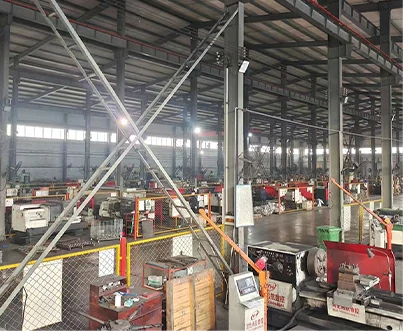The Importance of Frozen Food Packaging
In today's fast-paced world, frozen food has become a staple in many households. The convenience of ready-to-eat meals and ingredients that can be stored for extended periods has made frozen food a popular choice among consumers. However, the success of frozen food products relies heavily on the effectiveness of their packaging. This article delves into the significance of frozen food packaging, examining its roles, challenges, and innovations in the industry.
1. Preservation of Quality and Freshness
One of the primary functions of frozen food packaging is to preserve the quality and freshness of the food inside. When food is frozen, it must be kept at specific temperatures to prevent spoilage and preserve nutrients. Packaging materials are designed to create a barrier against moisture, air, and light—factors that can lead to freezer burn or degradation of quality. Materials such as polyethylene, polypropylene, and multilayer films are commonly used because of their excellent moisture retention and temperature resistance properties.
2. Extended Shelf Life
Proper packaging significantly extends the shelf life of frozen food products. By preventing moisture loss and the infiltration of air, manufacturers can ensure that their products remain safe and palatable for a more extended period. This not only benefits consumers but also reduces food waste, a critical issue in the food industry. With better packaging, retailers can confidently stock frozen items, knowing they will maintain quality until sold.
3. Convenience and Usability
The design of frozen food packaging also plays a crucial role in convenience and usability. Consumers appreciate packaging that is easy to open, resealable, and appropriate for portion control. For instance, single-serving frozen meals or family-sized packages with easy-to-tear seals cater to various consumer needs. Moreover, some manufacturers are introducing microwave-safe packaging that allows consumers to prepare meals directly in the container. This kind of innovation enhances convenience and aligns with the modern consumer's lifestyle.
4. Sustainability Concerns
frozen food packaging

As environmental awareness grows, sustainability has become a significant consideration in frozen food packaging. Traditional packaging materials often contribute to plastic waste, leading to calls for more eco-friendly alternatives. Many companies are now exploring biodegradable, compostable, or recyclable materials for their packaging solutions. Innovations such as plant-based plastics and reusable containers are gaining traction, helping to minimize the environmental impact associated with frozen food products.
5. Branding and Marketing
Frozen food packaging serves not only a functional purpose but also a marketing one. Eye-catching designs, informative labels, and nutritional information are essential for attracting consumers. Packaging can communicate the brand's ethos, quality, and commitment to health and sustainability. With increasing competition in the frozen food market, effective packaging can set products apart on store shelves, making it a vital element of branding strategy.
6. Challenges in Frozen Food Packaging
Despite advancements in technology and materials, several challenges remain in the domain of frozen food packaging. One significant issue is ensuring the integrity of the packaging during transportation and storage. Temperature fluctuations can compromise the barrier properties of packaging, leading to potential quality issues. Additionally, the industry must continue to innovate to meet the diverse needs of global consumers, which may vary by region regarding dietary preferences, cultural practices, and environmental attitudes.
7. The Future of Frozen Food Packaging
Looking ahead, the future of frozen food packaging appears promising. Continued research is likely to yield materials that are not only more effective at preserving food but also more sustainable. As consumer preferences shift towards healthier and more environmentally friendly options, the packaging industry must adapt accordingly. Integrating technology, such as QR codes for tracking freshness or information about sourcing, may also enhance consumer engagement and trust.
In conclusion, frozen food packaging plays a vital role in preserving quality, extending shelf life, and enhancing convenience, all while navigating the challenges of sustainability and competition. As the market continues to evolve, innovative packaging solutions will be essential in meeting consumer demands and promoting a more sustainable future in the frozen food industry.



